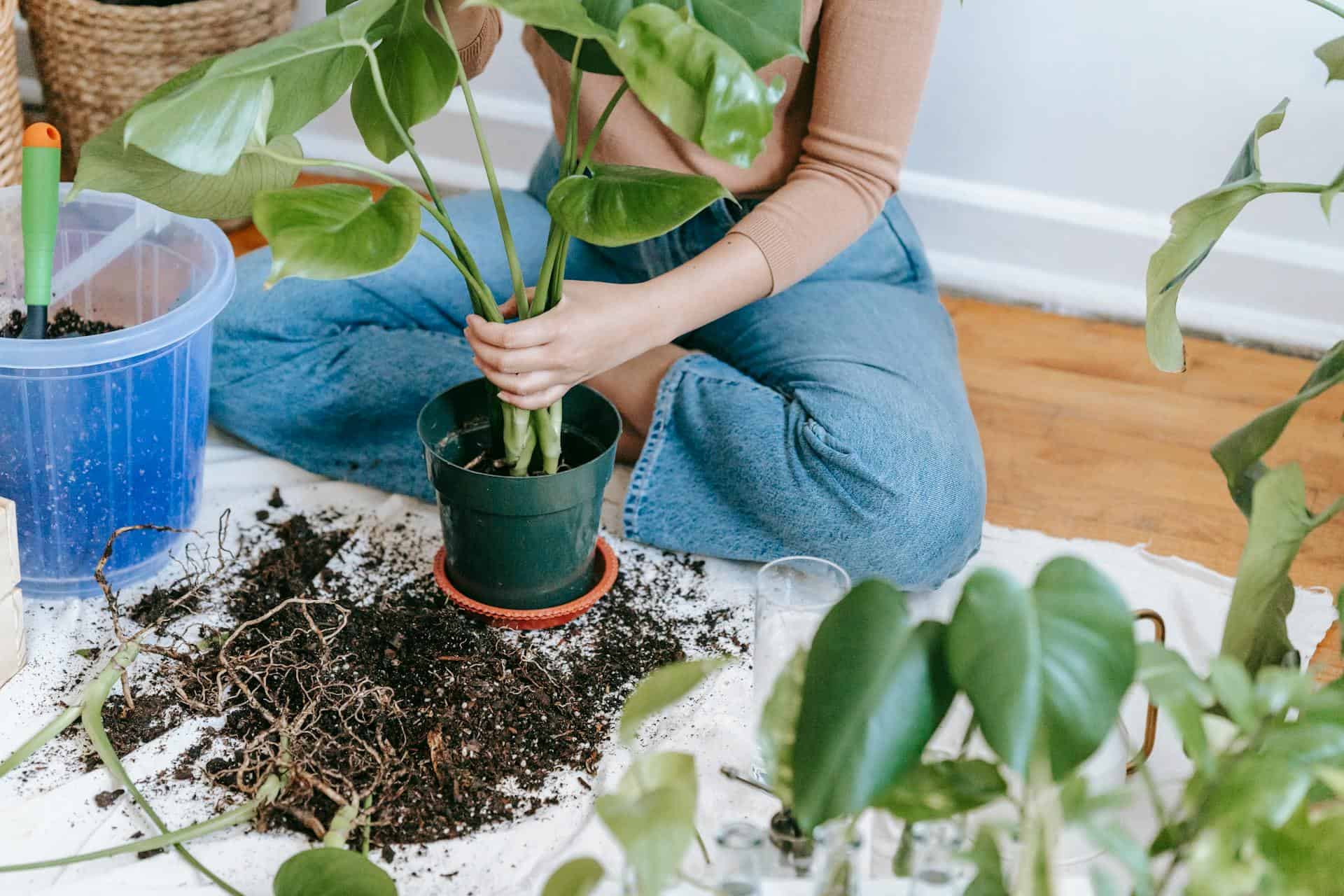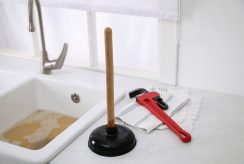Fabric pots offer many benefits to the plant that go beyond just being a stylish alternative to plastic or clay. They are scientifically proven to increase flower production, vegetable yields and to strengthen the plant’s root system.
The breathable fabric allows air to penetrate the container wall which keeps soil cool in direct sunlight. This evaporative cooling also helps to reduce over watering.
Air Pruning
Unlike pots that are lined with plastic or terra cotta, fabric pots allow air to penetrate the walls of the container. As a result, the plant’s roots are able to receive fresh oxygen on all sides. This process is known as “air pruning” and helps to stimulate root growth. It also results in a denser, more branched system of roots that can take up more surface area inside the pot without growing long and spiny.
This benefit allows gardeners to transplant their plants with less risk of root damage. It also means that they can grow their plants for longer and not worry about the need to move them up to a larger container in order to support their growth. With the right growing conditions, this method can lead to a better yield and more healthy plants.
A key factor that helps with the success of this type of planting is the size of the pot itself. Choosing a large pot can actually help to slow the rate of root growth because it forces the roots to spread out and reach more surface area. This makes the plants healthier and more robust, and it can also cut down on the amount of water that is needed.
The design of a fabric pot also plays a big role in how effective the “air pruning” is. While some containers have slats and holes on their sides that are designed to re-direct root growth, most of these do not provide the same benefits as a container that is designed with a permeable fabric like Spring Pot’s Herbgarden or Root Pouch.
When the roots of a plant meet the wall of a plastic container they tend to wrap around it, which creates a dense, intertwined structure that inhibits nutrient access and can eventually strangle the plant. With a Root Pouch or Herbgarden container, the permeable fabric prunes the roots so that they stop just short of the wall. This creates a stronger and more robust plant with more fibrous roots that can easily absorb the nutrients and moisture they need, according to the site with the only living soil bed kit available.
Free Drainage

Fabric pots are breathable, so roots get lots of oxygen. They also encourage aeration of the soil. In contrast, plastic pots stifle the soil and literally “cook” it – which robs it of its vitality.
This helps the roots thrive and enables them to absorb nutrients more efficiently, which is why plants grow much faster in fabric pots. They’re also lighter in weight so they’re easier to handle for gardeners of all ages and physical abilities, especially when moving them around a garden or patio.
Another benefit of fabric pots is that they’re easy to drain if the soil becomes overwatered. This can be a real problem with conventional plastic containers that can quickly become waterlogged. The aeration provided by fabric pots eliminates this problem completely and allows gardeners to avoid problems such as root rot and unwanted pathogens.
Lastly, fabric pots allow the outside temperature to pass through the container walls to the roots and help maintain the correct soil temperature. This is particularly beneficial when growing tropical plants in indoor climates or during cold weather events. In fact, we’ve found that the winter survival rates of Viburnum plicatum tomentosum ‘Mariesii’ are higher in fabric pots than in plastic containers even when the plants are unprotected in the cold.
The aeration of fabric pots is even more effective when used with a system of flood and drain (ebb & flow) gardening. The breathable fabric of the pots allows the water to soak in and out as needed allowing plants to remain properly moist at all times.
Circulating roots are not as much of a concern with non-woody plants like annuals and vegetables. While the aeration and air pruning benefits of these types of plants are still significant, they don’t tend to travel as far in the soil as the roots in woody plants. This is because the circling roots in non-woody plants are typically only a temporary condition that occurs when a plant is first transplanted from a pot to a garden. The aeration and air pruning of these types of plants usually disappears as the roots adjust to the new conditions of the native soil.
Sturdy
When you’re juggling multiple pots on your patio or balcony, it can be challenging to keep up with the watering. Even if you are irrigating frequently, the summer sun and wind can quickly dry out soil.
You can revive a tired container garden with some strategic watering and the addition of new plants or soil amendments. But a more drastic solution is to replace your plastic or clay pots with fabric planters.
The thick nonwoven fabric of the pots, such as the ones by Geopot, Smart Pot and WallyGro, is durable enough to withstand harsh weather conditions and protect the plants inside. The material is also permeable, allowing excess water to escape the pot. This prevents overwatering and keeps the roots hydrated.
The fabric is breathable, too. Traditional plastic pots restrict root aeration and bind them to the surface of the soil. But fabric grow bags allow air to move easily through the potting soil and into the root area, promoting healthier growth.
Plants in fabric containers have fuller, fibrous roots that are better able to absorb and retain moisture and nutrients. As a result, they are healthier and more productive than plants in traditional plastic pots.
With traditional pots, water drains from all sides at once, which creates a drying pattern in the potting soil and leads to root binding. Grassroots Fabric Pots solve this problem by creating a top-down drainage system that mimics the natural way the soil dries in nature. This system eliminates dry pockets, promotes a healthy growing environment and cultivates essential microbes in the potting soil.
Many people grow their own vegetables, herbs and flowers in containers on their patios or balconies. These vignettes of color and flavor can add a splash of curb appeal to the home and are perfect for those who don’t have an in-ground garden.
With proper care and the right kind of potting soil, your plants will flourish all summer long. But as the days grow shorter and the sun begins to fade, you may find your potting garden is looking tired and in need of some extra love. Breathing new life into these plants with a few simple strategies and your favorite fertilizer will help them look great again this fall.
Lightweight
With their versatility, durability and affordability, fabric pots have become the world’s undisputed best container for plants. They’re light and easy to handle, and they create the ideal environment for roots. These conditions lead to superior plant health, higher vegetable yields and brighter flowers.
Unlike plastic pots, which tend to trap moisture, causing rot, the porous fabric in these pots allows water to pass in and out easily. This prevents overwatering, which is a common problem with container gardening. The breathable fabric also helps control temperature. When the sun shines, the fabric absorbs heat instead of retaining it as plastic or terracotta does. This cools the root ball which promotes healthy growth.
The porous material of fabric pots enables oxygen to reach the root zone from all sides. As a result, the roots develop a finely branched structure that is ideal for absorbing water and nutrients. This natural air pruning results in denser, healthier roots that are less prone to root-bound issues. This leads to improved plant health and a more robust garden, whether in containers or in the ground.
Many growers find that the looser fabric pots allow for more root volume than classic container. This is great for reducing the number of transplants and improving yields. These looser pots are also easier to clean and wash. In fact, a lot of these types of pots are machine washable which makes them extremely durable and long-lasting.
PotKing Round Fabric Pots have been tested and certified to ensure a high quality product for growers. The fabric is BPA free, made from recycled materials and reusable for multiple growing cycles. These lightweight and breathable pots can be used as raised beds or for container gardening and can be stored easily when not in use.
The breathable fabric of these containers helps to eliminate the problems associated with container gardening such as overwatering, root-bound roots and nutrient deficiencies. These issues can be eliminated by using a breathable fabric pot that helps with proper drainage, air pruning and optimal root zone temperature. In addition, the root system of a plant in a fabric pot is healthier and stronger than that of the same plant in a standard container.





